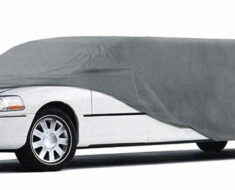
Source: https://edtechmagazine.com/
The combined studies of science, technology, engineering, and mathematics are known and presently referred to as STEM. The grouping of these disciplines is taught at increasingly younger ages than in past generations. Elementary through high school students are taught to approach the principles in a way that they will become second nature. The goal of incorporating STEM at a very early age is to create curiosity and passion for fields children and students may not even realize exist. Some of the most in-demand jobs in 2020 are in the fields of engineering. It’s never too early to engage the curious minds of children. From building blocks to building bridges and robots, it all starts with discovery and learning.
Babies are inquisitive from the day they are born. Some studies suggest babies begin to learn sounds during the end of the last trimester. Once they are born, babies can distinguish colors and shapes very early on. Parents can easily encourage a baby’s development by incorporating specific STEM words, simple concepts, and even infant and baby toys, such as a baby activity cube. Parents can begin by using simple words in everyday language. Babies are listening and will continue to recognize words that are repeated. Easy adjectives can be slipped into everyday language to describe the things the baby sees and touches. Concepts, such as peek-a-boo, may seem silly, but encourage recognizing spatial awareness. Baby activity cubes have endless options on the discovery of colors, counting, and shapes. Such a simple toy is purposely developing STEM skills.
Babies can’t learn STEM skills all on their own. Learning takes the encouragement, nurturing, and devotion of parents and educators. STEM is simple at an early age. Parents won’t even realize they are possibly creating the next engineer. The strong foundation in concepts that may seem college level can easily be incorporated into daily life. This sets the foundation for future learning. Repetition is key, as well as showing interest in the milestones a baby and toddler has. Enthusiasm for baby pointing out the shapes and colors on a toy or baby activity cube will continue their interest in learning more. Parents and educators of even the youngest of children can work together to expand on what the child shows a curiosity for. Observing what the baby, toddler, or child seems drawn to, and then expanding on the curiosity will amazingly broaden their interest.
STEM works in many different ways that parents use each day and aren’t even aware of. Parents are their baby’s first teacher. Sitting on the floor and building blocks can lead to a future bridge designer. Turning the dials and pushing the buttons on a brightly colored toy can increase the child’s interest in how something is made, and what makes it work. Having the youngest baby watch as a parent repetitively plays with a baby activity cube will entice the baby’s observation and interest until they can make the toy work themselves. It’s never too early to begin a child’s exploration into what science, technology, engineering, and mathematics have to offer to their world.









































